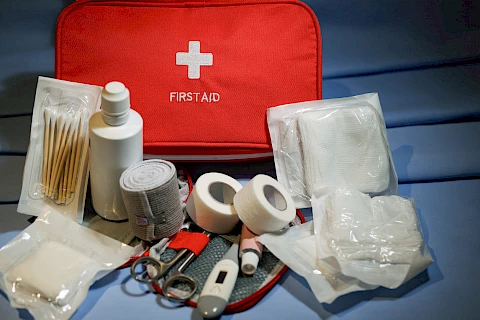
As fall approaches, make sure seniors are ready for any emergencies. Being well-prepared can make a significant difference in comfort and safety. Here, we'll outline essential items that every senior should have in their fall emergency preparedness kit, how to store it, and how often it should be checked and updated.
Essential Items for a Fall Emergency Preparedness Kit
What belongs in your kit? Start with the basics below: You can always add comfort items or essentials that are specific to your needs.
Non-perishable Food
Having a supply of non-perishable food is necessary during any emergency. Choose items that are easy to prepare and have a long shelf life. Canned goods like soups, vegetables, and fruits are excellent options. Dry foods such as pasta, rice, and cereals are also good choices. Always store an easy-to-use, non-electric can opener! Store these items in a cool, dry place and rotate them periodically to ensure freshness.
Water
Water is another essential component of an emergency kit. It's recommended to have at least one gallon of water per person per day for at least three days. Store bottled water in a cool, dark place. Consider water purification options like purification tablets or filters in case the supply runs low and you need to tap into the water heater or a less-than-savory source.
Flashlights and Batteries
In the event of a power outage, a flashlight is indispensable. Opt for LED flashlights as they are energy-efficient and have a long battery life. Keep extra batteries in your kit to ensure the flashlight is always operational.
Backup Medications
Essential medications can be life-saving. List all important medicines and include at least a week's supply in your kit. Store the medications in a waterproof bag to keep them safe and accessible. Regularly check expiration dates and update as needed.
First Aid Kit
A well-stocked first aid kit can address minor injuries and prevent them from becoming severe. Include basic components like bandages, antiseptics, and pain relievers. Customize the kit with any personal medical supplies you may need.
Personal Hygiene Products
Maintaining hygiene is important even in an emergency. Include items like soap, toothbrushes, toothpaste, and moist towelettes. Store these items in a waterproof container to keep them clean.
Important Documents
Important documents should be readily accessible in case of an emergency. Include copies of identification, insurance policies, and medical records. Store the documents in a waterproof and fireproof container.
Clothing and Blankets
As temperatures drop during fall, having warm clothing and blankets is vital. Pack extra layers of clothing including sweaters and thermal wear. Keep at least one heavy blanket in your kit.
Storing Your Emergency Preparedness Kit
Choosing the right location to store your emergency kit is important. Store the kit in an easily accessible location like a hallway closet or under a bed. Ensure that everyone in the household knows the location of the emergency kit. Consider having several kits in different areas, especially if your home has multiple levels.
Checking and Updating Your Kit
Regular maintenance of your emergency kit ensures it is always ready for use. Check the kit every six months. Check expiration dates and look for signs that food or medications need to be replaced. Keep an inventory list and mark items as you check or replace them to keep track of what's in the kit.
Stay Prepared With Senior Helpers
Being prepared for an emergency is essential, especially for seniors. Creating an emergency preparedness kit ensures you have everything needed to stay safe and comfortable. Start building your kit today, and remember to check and update it regularly.
Do you need assistance with day-to-day tasks, from personal care and meal planning to important projects at home? Contact us at Senior Helpers Menifee Valley. We're here to help seniors in Lake Elsinore, Menifee, Perris, Nuevo, and Homeland live safely and independently on their terms.